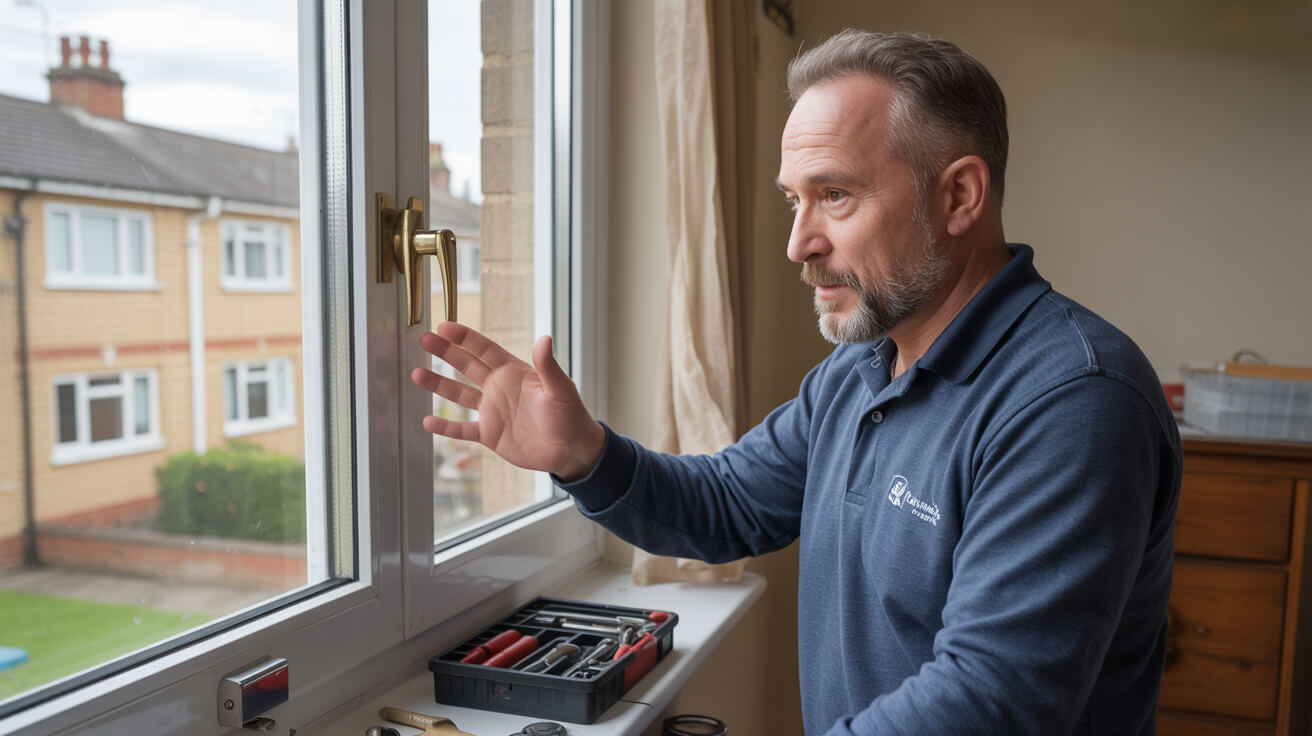 How To Build An Emergency Repair Fund For Your Rental Property
How To Build An Emergency Repair Fund For Your Rental Property

What Happens If You Delay Emergency Repairs on Your Rental Property?
Emergencies don’t respect your calendar, your cashflow, or your stress levels. The day your boiler stops in a frosty London January or your roof gives way to a spring downpour—that’s when theory meets reality. Here’s a fact that should grab your attention: more than half of UK landlords can’t cover a major boiler or power failure within 48 hours (assistalandlord.co.uk). Typical bills run £1,800–£3,000 for urgent repairs in city homes—even seasoned landlords experience gut-punches when blindsided by leaks or flickering electrics.
If you can’t pay for urgent repairs on demand, your reputation, your tenants, and your licence are all at risk.
Delay is more than an inconvenience. It’s a magnet for complaints—tenants ring letting agents, agencies escalate, and councils may impose fines or improvement notices. Prospective renters notice and avoid properties with a “notorious repair” label. Miss a statutory deadline, and you risk not just lost rent, but penalties, mandatory repairs, and even forced licence reviews. An emergency repair fund isn’t a luxury—it’s your guard rail against spiralling stress, legal risk, and reputational damage. The question isn’t “will a crisis hit?”—it’s whether your reserves can survive three in a single quarter. Could they?
What’s a Real Emergency Repair Fund Goal for UK Landlords (And Why Does It Fail Most Owners)?

Think rules of thumb will protect you? Emergencies don’t care about averages. A landlord relying on wishful budgeting will inevitably get caught off guard. Here’s how Hector Gauge (City & Guilds-certified engineer) does it—grounded in risk, not guesswork:
- Set aside 1–3% of your property’s value per year: —so a typical London flat needs £3,000–£9,000 stashed and topped up, absorbing both shock repairs and planned maintenance ([assistalandlord.co.uk](https://www.assistalandlord.co.uk/dealing-with-unexpected-property-maintenance-costs-a-guide-for-landlords/?utm_source=openai)).
- Keep 1–2 months’ rent liquid: —often £1,500–£3,000 for midmarket properties ([property118.com](https://www.property118.com/how-much-should-you-put-aside-for-repairs/?utm_source=openai)).
- Build a “Triple Threat” reserve: —enough to handle three major events at once: a boiler swap (£2,500), urgent roof works (£650–£1,800), and electrical faults (£400–£1,200).
Older stock or complex blocks? Add 5–15% extra, as legacy problems (rising damp, failed wiring, brittle pipework) can strike in clusters.
If your reserve can’t cover all three in the same quarter, it isn’t robust. Padding your fund now is cheaper than scrambling in a crisis.
Don’t build your fund on hope or the last mild year. Audit last year’s actual callouts and contracts. Owners who check their real outgoing are less likely to be blindsided—and tenants see the difference when you say “yes” instantly, not “let me check with the bank.”
How Do You Build (and Actually Maintain) a Reliable Emergency Repair Fund?

Intent doesn’t move the needle—habits do. Hector’s approach, worked over two decades in UK lettings, is all about frictionless systems, not heroic discipline.
Set Up a Dedicated, Protected Repairs Account
Open a separate, ringfenced bank account (Starling, Monzo, high street, whatever fits). This isn’t for morning pastries. It’s only for emergency property issues—no overlap with rent income or your personal bills.
Automate Contributions—No Manual “Good Intentions”
Direct debit/standing orders are non-negotiable. “Forgets” multiply when you’re busy or abroad. For a central London flat, that might mean £200 a month transferred by habit, not hope.
Pre-Authorise Trusted Access
Appoint your agent or a reliable, certified tradesperson with controlled, view-only or capped withdrawal rights. Emergencies wait for nobody, especially if you’re in meetings, on holiday, or unreachable.
Hard-Gate Withdrawals
Only the real deal unlocks funds: invoices, compliance letters, or issues logged with time-stamped evidence. Favour clear digital logs.
Relentless Audit & Top-Up After Every Major Work
After repairs, tenancy changes, or annual inspections—reconcile. Check receipts, update logs, and top up so your fund never slips below the minimum.
Small, regular deposits beat big, irregular infusions. The only repair fund that works is one you never have to think about.
Bulletproof Emergency Repair Fund Routine
- Repair-only account
- Monthly auto-transfer
- Agent/tradesperson access protocol
- Withdrawal rules (with evidence)
- Audit and instant top-up after each work
This “set and forget” engine is the secret to moving from distress calls to “handled” with zero friction. Landlords who operate like this don’t panic—they authorise and move on.
How Much Should You Save Each Month (and When Does the Target Change)?

Random guesswork is where most landlords stumble. emergency repairs have a nasty habit of outgrowing static budgets—your fund needs dynamic, property-tuned contributions.
Monthly Minimums (Guideline, Not Gospel)
- £100/month: — Compact, modern flats with good recent maintenance history
- £200–£300/month: — Larger, older, or multi-let properties
When to Up the Amount?
- After every new tenancy or move-in/move-out
- Following a major repair or annual property check
- If your fund ever drops beneath 1% of property value or less than one month’s gross rent
Most landlords only ‘review’ after a shock. Smart ones sync top-ups to tenancy renewals and audit dates.
Miss a top-up and your safety net gets thinner. Miss two, and the next “minor” emergency snowballs into cuts, stress, or late mortgage payments.
Which Repairs Actually Qualify as True Emergencies?

A loose kitchen tap and a burst pipe are not on the same planet. Here’s how to separate emergencies (fund eligible) from routine wear and tear (ordinary budget).
| Emergency? | Typical Cost | Repair Fund Use |
|---|---|---|
| Boiler breakdown | £1.8k–£3k | Yes |
| Roof leak | £650–£1,800 | Yes |
| Major flood/leak | £400–£2,800+ | Yes (+ insurance) |
| Electrical failure | £400–£1,200+ | Yes |
| Structural/fire loss | £3,000+ | Yes (+ insurance) |
| Cosmetic (Paint etc) | £50–£250 | No (ordinary funds) |
| Tenant damage | Variable | Deposit, not fund |
Regular budgets cover faded paint, squeaky doors, and knackered curtain rails. Reserve your emergency fund for issues threatening safety, suppressing basic living conditions (hot water, heating), risk to property, or legal compliance. Log and evidence every withdrawal—you’ll need records both for insurance and for agents or council reviews.
How Do You Stop Your Fund From Dripping Away—or Being Raided for Non-Essentials?

The biggest leak isn’t always in the pipes—sometimes it’s fund discipline. Here’s the system that keeps your reserves ready, not raided:
- Quarterly or post-tenancy audits: —cross-check receipts, photos, and jobs logged against your fund balance
- Digital logs: —cloud documents, photo receipts, and simple Excel or Google Sheets records as standard (also sort agent and council requests on demand)
- Withdrawal controls: —only unlock for invoice-supported repairs, compliance notices, or emergency events above a set minimum
- Annual target review: —account for rising costs, rate of incident claims, and inflation after significant works.
The difference between a shambles and a system is a 30-second review each quarter. Habit beats panic every time.
By making your fund digital and traceable, you gain “invisible reputation capital.” Agents, buyers, and tenants don’t see stress—they see method.
The Most Common Mistakes Landlords Make With Emergency Funds (and the Fastest Fix for All)

Some errors are so common they’re almost traditions—don’t let them trip you up.
- Skimping: Under 1% of property value, or just a month’s rent, leaves you exposed to even a single major event.
- Blending or borrowing: Tapping the fund for routine repairs, or using it to delay payments—slippery slope.
- Assuming deposits will bail you out: Legally, that covers only tenant-caused damage. The big stuff—boilers, pipework, electrics—is yours.
- Sloppy documentation: Incomplete logs mean insurance won’t pay and council compliance falters.
- Forgetting automation: Manual transfers are forgotten more often than not; schedule them and move on.
Repairs aren’t theoretical — delayed action is what makes small leaks become major insurance claims.
Every landlord who keeps a properly documented, automated, and audited emergency reserve raises their property’s market value—just ask an agent what’s worth more to buyers: panic, or process?
Which Laws and Regulations Leave No Room for “I’ll Get to It Later”?

Skill and pride don’t cut it—regulation does. The law expects you to repair promptly, not just eventually.
- Section 11, Landlord and Tenant Act 1985: Mandates repairs on structure, heating, water, sanitation, and electrics without delay. Councils won’t accept “I’m on holiday” ([legislation.gov.uk](https://www.legislation.gov.uk/ukpga/1985/70/section/11?utm_source=openai)).
- Periodic safety checks: EICR, HHSRS, EPC—the compliance alphabet—demand not just up-to-date paperwork, but *proof you’ve got the funds to respond*.
- Insurance exclusions: Policies often won’t cover neglect, slow responses, or normal wear and tear. Don’t have a repair fund? You become the payer, not the claimant.
Councils and agents look more kindly on landlords with documented, automated repair funds ready to deploy.
Show a system, and you become a low-risk, high-confidence operator—good tenants and professional partners know the difference.
How Can Smart Emergency Fund Management Actually Advance Your Portfolio (Not Just Defend Against Catastrophe)?
Forward-thinking landlords flip the emergency fund from “necessary evil” to business tool.
- Apply surplus funds to preventive upgrades—energy-efficient boilers, leak detection sensors, better insulation ([propertymark.co.uk](https://www.propertymark.co.uk/resource-library/energy-efficiency-in-rental-properties.html?utm_source=openai)).
- Tap grants for upgrades—combine required works with available public or private incentives.
- Sync audits to key events—move-ins, renewals, annual checks—so tenants and agents *see* your process.
- Make your process visible—highlight your fund and repair protocols in letting adverts, onboarding packs, and agent meetings.
Landlords who see the fund as a forward investment—not just a relic for emergencies—get higher-quality tenants and stay ahead of voids.
A visible, receipted fund is as much a business asset as a fresh EPC certificate—showing everyone that you’re future-minded, resilient, and not just lucky.
Ready to Take Control? Book Your Fund Audit or Automate With All Services 4U
Years of panic-fixing after the fact bleed out more than just cash—they sap your sanity and kill your market edge. When your emergency fund works as a proactive shield, not a mop-up operation, your property becomes a stress-free, tenant-ready, and future-proofed investment.
- Book a complete fund audit: Hector Gauge (City & Guilds-certified) will personally assess your property, right-size your fund, set clear protocols, and hand over a ready-made digital log.
- Download your “Repair Fund Cheatsheet”: One click walks you through targets, sample schedules, and instant automation.
- Let All Services 4U systemise everything end-to-end: From banking setup to fund protocols, agent/contractor authorisation, and post-incident reviews, we make compliance, cover, and action seamless.
Choose to be that landlord—the one agents recommend, tenants trust, and rivals wish they could copy. You don’t control when emergencies arrive, but you absolutely decide how prepared you are today.
All Services 4U handles thousands of urgent repairs yearly—trusted by London’s top agents and rated 4.9/5 for professionalism, speed, and communication. ([allservices4u.co.uk](https://allservices4u.co.uk/))
Frequently Asked Questions
Why do UK landlords who skip an emergency repair fund face cascading risks they can’t control?
Most property owners underestimate how quickly a routine repair can mutate into a business crisis. Legally, every UK landlord is on the hook to restore heat, fix leaks, and address safety faults at speed—no exceptions for budget gaps. Yet over half of portfolios in 2024 struggled to produce £2,000 for urgent work in under two days, leaving tenants exposed and licences at risk. An emergency fund isn’t just a spare float; it’s the difference between keeping tenants secure and attracting scrutiny from local authorities, insurers, and letting agents whose patience with delays has eroded in today’s regulatory climate.
When repairs stall, local councils can override your control, tenant reputation drifts, and insurers may refuse claims for “preventable” issues. Renters now share their experiences publicly—the word spreads if maintenance slips, undermining your future lets. A well-defended reserve signals to all parties that you run a professional, compliant operation. Insufficient provisioning, on the other hand, flags you as a risk—one whom partners, agents, and tenants quietly avoid.
“A single missed emergency can undo a year’s worth of landlord professionalism—preparedness is visible before problems surface.”
What unseen financial drains catch landlords without a reserve?
- Small leaks escalate into £4,000 floor and wiring repairs within days.
- Missed boiler fix triggers statutory penalties, rent rebates, or temporary re-housing costs.
- Non-compliance fines can accrue daily, not just once-off.
- Agents may require compulsory float top-ups or withhold rent if you fall behind on emergencies.
Your reserve fund is the foundation for dependable tenancies and lower insurance premiums. Protecting it is protecting your entire property business.
What’s a realistic emergency repair fund for UK landlords, and how does it adapt to your property type?
No two portfolios need the same buffer. Still, UK landlords who avoid crisis keep 1–3% of property value, or at least one to two months’ rent, set aside for emergencies. For a typical city flat, this comes out at £2,000–£6,000 a year—demanding more when dealing with older properties, HMOs, or those in high-wear zones where faults and tenant turnover spike.
Recent numbers show that success hinges on overestimating need: 25–35% of annual rental income is increasingly common for landlords with multiple properties or higher compliance loads. Annual repair surprises—like EICR electrics, roof damage, or sudden heating loss—have cost solo landlords £1,000–£2,000 above plan in the past year. Fine-tuned operators top up their fund at every tenancy change or compliance check, never assuming that “last year’s safe” predicts next year’s risks.
| Fund Type | Typical Range | Best For |
|---|---|---|
| 1–3% of property value | £2,000–£6,000/yr | Standard or newer lets |
| 1–2 months’ rent | £1,500–£4,000 | Flats & lower-wear rentals |
| 25–35% of annual rent | £3,000–£10,000 | HMOs, older, or larger portfolios |
Review and adjust your reserve with each inspection cycle, insurance renewal, or legal update—insurers are now querying for “named emergency funds” on policy paperwork, and agents may demand proof upfront.
Why do landlords misjudge the right amount?
- Labour and materials surge in price far faster than rents.
- Legal base-lines (Gas, EICR, EPC) silently update, adding fresh mandatory repair work.
- Multiple properties multiply weak spots; what looks “safe” for one becomes dangerous when three go wrong at once.
Future-focused funds build operational freedom and sharper negotiating power with every repair or renewal.
Which sorts of repairs drain an emergency fund fastest—and how do these hit your bottom line?
Emergencies that hammer landlord cashflow rarely give much warning. Heating collapses, water leaks, roof breaches, and failing electrics can run into thousands. A winter boiler failure averages £2,400—including callout surcharges; flood repairs from burst pipes or failed gutters often start at £3,000 but can multiply if walls or wiring are soaked. Delayed roof patching after storms has cost landlords over £5,000 in repeat 2023 cases, especially where insurance invalidates claims due to “preventable escalation.”
The costs go beyond the initial invoice. Lost rent, tenant statutory compensation (for loss of amenities), and re-letting delays often rival direct repair costs—especially now that agents flag non-compliant or slow-to-respond landlords internally.
| Event Type | Immediate Cost | Potential Secondary Loss |
|---|---|---|
| Boiler breakdown | £1,800–£3,500 | Rent loss, legal sanction |
| Severe roof leak | £900–£2,500+ | Damp, rot, further repairs |
| Burst pipe/flooring | £3,000–£8,000 | Insurance shortage, voided R |
| EICR electrical fail | £400–£1,200 | Statutory penalties |
“The cost you see is just the start—delays double or triple out-of-pocket loss before the tenancy returns to normal.”
What features speed up cash drain?
- Relying on a “one-pot” account for everything—miss one leak, face cascading deficits.
- Chasing multiple quotes—time lost translates into heightened tenant distress and premium contractor charges.
- Assuming “insurance will pay”—many everyday emergencies, like damp-linked electrics, aren’t covered or reimbursed in time.
A segmented, replenished fund is your only shield against big, compounding losses.
What are the actionable steps for setting up and sustaining an emergency repair fund that works?
Start by opening a standalone bank account. Set a recurring transfer from monthly rent, matching your chosen buffer method. Modern landlords often use digital platforms that log all withdrawals, require dual authorisation (owner and, if used, agent), and attach a receipt or photo to each spend. Limit access to only those named in tenancy agreements or management contracts.
Audit your reserve as part of inspection routines: at annual checks, move-ins/outs, and after large repairs. Adjust transfer amounts upward if the account drops below your planned threshold, or when properties face significant upgrades or legislative risk.
| Step | Frequency |
|---|---|
| Set up separate account | Once (initial) |
| Automated deposit | Monthly, each rent |
| Receipt logging | Every withdrawal |
| Balance audit | 2–4× per year |
| Agent access review | At contract change |
Monitor spends with real-world discipline: anything outside true emergencies (structural, compliance, or tenant safety) gets a “hold” note for the maintenance budget or routine float. Use digital statement logs to pass insurer or letting agent scrutiny instantly—this speeds claims and builds trust with all counterparts.
How do disciplined landlords bullet-proof their funds?
- Demand sequential approval—never one-person access for large outlays.
- Sync audit dates with safety compliance (EICR, EPC, gas safety) to avoid admin overload.
- Keep evidence (photos, receipts) for every emergency fund claim.
- Communicate to tenants “Repairs are automatic—no need to chase,” reducing churn and online complaints.
A robust, transparent fund is the best negotiator you have when the unexpected arrives.
What strictly counts as an emergency for your repair fund—and what should stay outside it?
Only spend from your emergency fund on repairs that affect habitability, immediate safety, or legal compliance. Anything else is routed to your routine float, deposit claims, or longer-term refurbishment budget. These categories are non-negotiable under current UK letting regulations and audits.
- Must fund immediately: Heating/hot water loss, power cuts, gas/water leaks, severe rain ingress, jammed security points (doors, ground-floor windows), life-safety alerts.
- Statutory or compliance failures: Failed EICR findings, mandatory smoke/CO alarms, fire safety upgrades.
- Major occupant loss: Repairs that, if not done, result in the property being unliveable and rent being refunded.
Do not allocate from this fund for planned upgrades, purely aesthetic works, or issues clearly caused by tenants—those go through deposit deduction or scheduled round. Cross-charging blurs your audit trail and may invalidate future reserve claims.
| Repair Situation | Use Emergency Fund? | What to Do |
|---|---|---|
| Broken boiler (winter) | Yes | Callout, log, restore |
| Critical electrics | Yes | Immediate fix, compliance log |
| Worn carpet/walls | No | Routine/float |
| Tenant-broken appliance | No | Deposit claim |
| Blocked non-leaking gutter | No | Maintenance account |
“Defining a strict spending line stops both accidental misuse and future disputes with partners, auditors, or tenants.”
How to handle “could go either way” repairs?
Get clear photo documentation, request a second opinion from contractors or agents, and—if undecided—err on the side of refusal, logging your reasons until the urgency is proven. Consistency over time becomes your legal and financial shield.
How do leading landlords keep their emergency funds secure, topped up, and immune to “friendly misuse”?
Digital discipline is the new best practice. Set up automated rent slices that route directly to your fund, pausing only if properties are vacant. Build processes that require two-stage sign-off (owner plus agent), photo evidence, and explicit receipts uploaded for every emergency withdrawal. Quarterly audits, especially post-tenancy or after expensive works, stop small leaks from growing unnoticed.
Platforms such as Arthur, Fixflo, or even shared Google Sheets can log fund activity for years—backed up and ready to share with insurers or councils during a claim or inspection. Restrict access to minimum necessary parties, removing privileges if fund drift is detected. Own the process openly with tenants and partners: a written policy and visual fund records add trust at every service interval.
| Process or Tool | Benefit |
|---|---|
| Automated deposit | Ensures regular fund replenishment |
| Withdrawal log (with receipts) | Proof for audits, claims |
| Dual sign-off | Stops single-person misuse |
| Platform backup & review | Loss-proof, fast reference |
| Regular agent training | Prevent “compassionate” misalloc |
“Audit trails are protection—not paperwork. Transparency now pays out when emergencies hit later.”
Extra steps for bulletproofing against misuse
- Train every agent or backup user on your emergency-spend rules; revoke access at first breach.
- Integrate fund checks into your property management software’s dashboard.
- Report key balances at every annual meeting or compliance check, keeping all stakeholders engaged.
- Pre-agree escalation routes: if in doubt, halt spends and review as a team.
Making discipline visible wins the best long-term letting referrals, smoother insurer settlements, and a “no headaches” reputation.
Which UK property regulations and compliance checks absolutely require robust emergency fund management?
Property law in the UK sets a non-negotiable bar: critical repairs are the landlord’s pestle, not the tenant’s burden. Section 11 of the Landlord and Tenant Act 1985 mandates prompt attention to structure, heating, water, and electrics. HHSRS empowers councils to intervene if habitability or health is at stake—ignoring emergencies draws swift fines and forced works with no appeal to “insufficient funds.” New licencing rules—especially for HMOs and selective schemes—demand documented resources or automated repair-flow evidence.
Safety certificates (EICR, gas safety, EPC) require not just theoretical readiness but proof you can pay for fast repairs—delays or inability to fund works can void insurance, suspend licences, or trigger tenant compensation claims. Insurers now routinely audit repair fund statements before paying out for “unforeseen” calamities.
| Regulatory Framework | What’s Required | Fines/Consequences |
|---|---|---|
| Section 11, LTA 1985 | Immediate repair, 24–72 hr window | Council fixes + chargebacks, tenant claim |
| HHSRS | Zero-delay risk removal | Licence review, forced works, rent refund |
| Local licencing audits | Proof of funds, repair logs | Licence drop, blocked rental agreements |
| Insurance claim reviews | Bank log, digital prompt | Payout refusal, court dispute |
A visible, well-managed repair fund is increasingly not just “responsible”—it’s the bar for operating freely in UK letting.
What practical compliance habits keep you risk-proof?
- Bank statements, digital logs, and receipts accessible for on-demand inspections.
- Routine, pre-emptive updates to reserves as property profile or risk status shifts.
- Clear, written controls for all involved—owners, agents, and accounting partners.
- Document every spend: compliance is proven by what you show, not what you promise.
“Landlords who let the systems speak for them never fear a council review or insurance audit—they know every penny is accounted for, every protocol followed.”
Step up as the landlord who doesn’t just fix problems but prevents crises—ready your properties for anything. Book a confidential fund check, access Hector Gauge’s expert checklist, or get hands-on support from All Services 4U. When your discipline is visible, so is your reputation—and that’s what keeps tenants, agents, and your balance sheet happy for the long haul.



